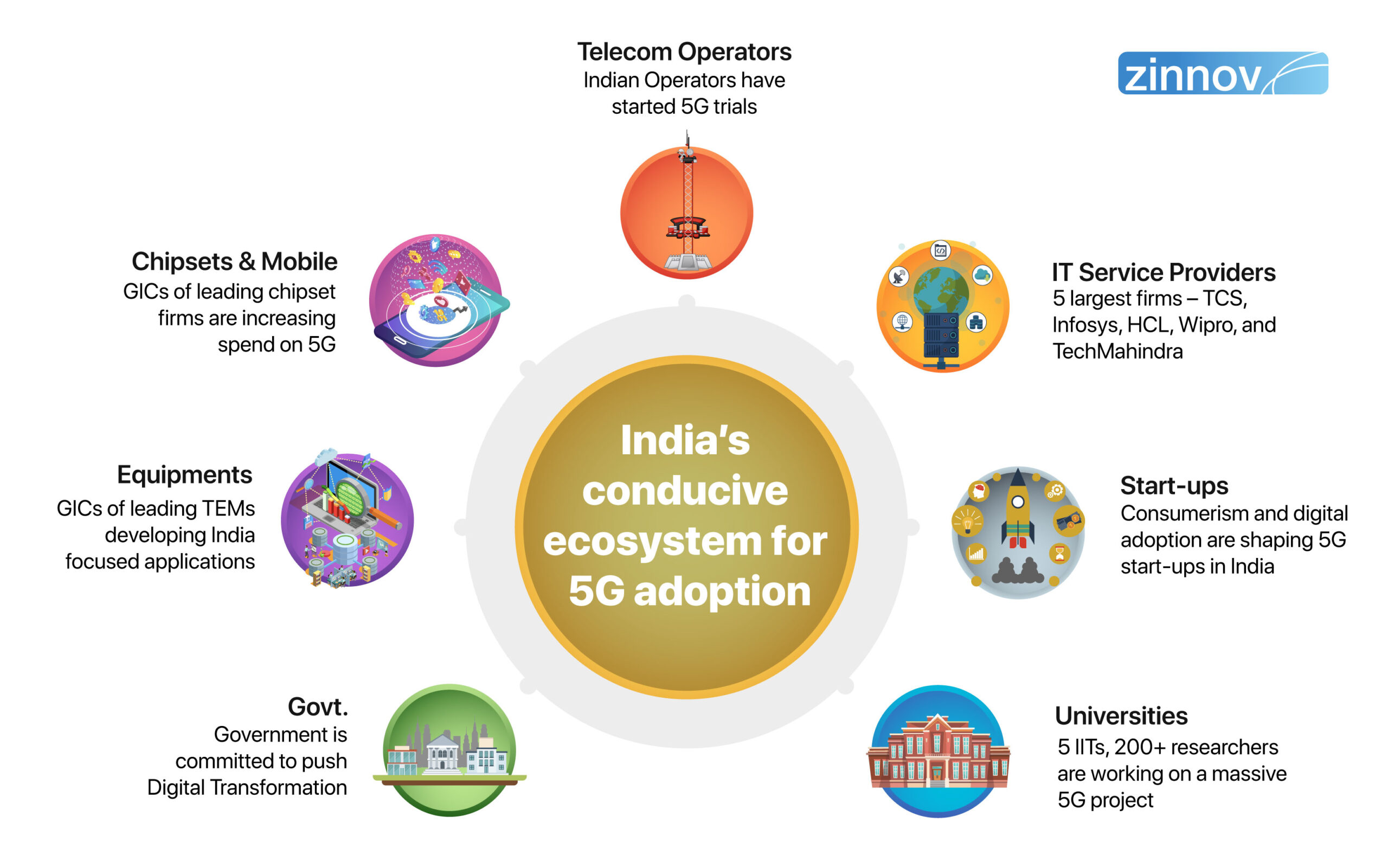The next wave of digital growth in India will be powered by 5G. Increased bandwidth, improved reliability, and lower guaranteed latency are just some of the many benefits 5G promises to deliver. In fact, The Steering Committee estimates that the cumulative economic impact of 5G on India could reach one lakh crore rupees (one trillion USD) by 2035. With the opportunity to support new use cases and applications, as well as significantly lowering the cost of owning and operating a mobile network, operators can take steps now to begin preparing for 5G.
What could have the most profound economic impact in India is the opportunities 5G will enable across several critical sectors – education, healthcare, and public safety. 5G will allow network operators to turn the vision of Digital India into a reality by supporting upgrades in these sectors and beyond. Let’s look at a few key verticals and explore the opportunities for 5G.
Education
In a recent survey conducted by Aser, only 43% of students ages 14-18 years could solve a class IV math problem. With the rise of immersive experiences such as Artificial Intelligence (AI), Augmented Reality (AR), and Virtual Reality (VR) being used in the classroom for higher quality and more entertaining experiences for students, 5G will be critical in enabling these technologies. The speed and resiliency of this technology will ensure classrooms across India get smarter, ultimately helping to develop a more educated society in India and close the digital divide.
Healthcare
One of the major benefits of a digital society powered by 5G is improved healthcare. With a population of more than a billion people, there are a variety of medical needs relying on networks with high bandwidth and a guaranteed low latency. In the future, 5G can support remote surgeries, home healthcare and medical wearables, across both rural and metro India.
Public safety
Traditional communication systems of first responders are primarily equipped for transmitting just voice, not images and videos. As we move toward 5G, first responders will be able to send pictures and videos from ground zero during natural disasters or other crises to provide valuable insight into the extent of damage and help needed. With much higher available bandwidth, coupled with the highest priority network availability enabled with network slicing, this technology enables remote medical assistance to change how citizens are treated and ensures they receive the proper attention they need. The ability to communicate quickly from a disaster scene that relies on a 5G network could help prevent further damage and save lives.
The potential of 5G across key sectors like education, healthcare, and public safety in a booming economy like India cannot be overemphasized. However, to be successful these use cases will rely on an agile, reliable, and adaptive network. The journey to 5G will take many years and to prepare and network operators must start now to ease the transition. Gearing up for this is far more than just a radio upgrade – it requires upgrading the wireline infrastructure that interconnects radios and data centres, where accessed content is hosted. It is the wireline network that will ultimately dictate the success of end-to-end 5G connectivity.
Further, 5G will require computing power to be located at the edge of the network that will deliver increased scale and lower latency for an overall improved application performance. 5G will also require a highly scalable, programmable, and disaggregated IP-based network to best address the new challenges and opportunities of the future. Consequently, Mobile Network Operators (MNOs) are seeking ways to open their networks to improve and accelerate innovation through increased competition that will also reduce costs via a broader and more diversified vendor ecosystem.
As India looks ahead to the upcoming 5G spectrum auction, the time is now for mobile network operators to take concrete steps by exploring the 5G technology and vendor ecosystem so end-users, humans and machines, in all sectors can reap all the benefits made possible.
By : Dijvijay Sharma, Senior Director,Ciena


